July 2018 Update
by
BlueSalamander » Mon Jul 16, 2018 3:01 pm
Hello everyone, here is the July update on the development of Knights of the Chalice 2.
In the past weeks, there were many additions and improvements to the game.
* It's been a while since I posted gameplay screenshots, so here are a bunch of them. Click on a picture to enlarge it:



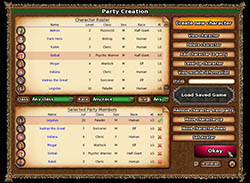





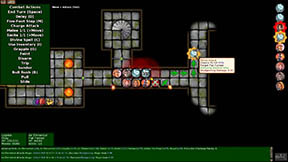

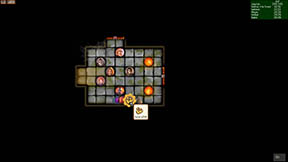
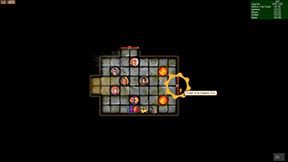

* Graphics: I have completed the transfer of many art pieces from KotC 1 to KotC 2, greatly expanding the number of available monster tokens in KotC 2. Even though they are not high resolution, KotC 1 sprites actually make fine supplementary tokens and portraits for KotC 2.
* Help entries: I'm very happy to say that that work is 100% complete. As well as information on controls and shortcut keys, the help covers all of the topics found
on the website. But the in-game help is more in-depth and more exhaustive and everything is interconnected with hyperlinks. You can right-click almost anything in the character-sheet screens, character-creation screens and level-up screens to obtain specific information about what you clicked on.
* New adventure map: I've worked on a nice castle map that will have an important role in the demo. See the following map-editor images. Click to enlarge. The castle is called Gleegold Keep. I'm also including an image showing what the editor looks like when adding walls, special squares, altitudes and activable zones.

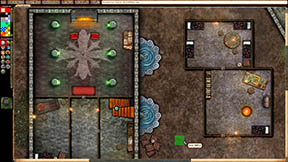


* Regional map: I've created a regional map, click on the image above to enlarge it. Locations where the party can travel to will be highlighted with a blue glow (or red glow when mousing over them). These locations will appear progressively on the map, as you learn about them in-game. Currently, the background image is a scaled-up version of a small part of
my world map. The icon in the bottom-right corner of the regional map is intended to bring up the world map, in case the party needs to travel to another region. The locations / points of interest can be added easily using the editor.
* Soundtracks: I'm happy to say that I've finished adjusting the volume of the 50 soundtracks available in the game. Volumes needed to be adjusted so that one song is not much louder or much quieter than other songs. The KotC 2 soundtracks include new tracks from Manuel, new tracks from Tyson, all the tracks from my past games, plus a small number of ambient/nature tracks. Manuel and Tyson recently contributed new tracks.
* Bardic sound effects: I now have the complete set of
bardic music clips from Robert. There will be four musical instrument categories: lute, harp, panflute and bagpipes, each resulting in different sound effects when the party's Bard plays a song. I also have item icons for all four categories. Now I just have to make sure that the bard can equip musical instruments and implement the four sound-effect sets in the game. Robert is also planning to do a Tavern soundtrack.
* Voice effects: I've just started processing the voice effects from voice actress Ariana. First I need to process them and prepare them for the game. Then I need to implement them so that they play at the right times in-game. For example, a random acknowledgement sound will be played when the player clicks to have the party move from point A to point B. Voice effects may also be played through scripts.
* Editor upgrade: I recently completed a massive upgrade of the module and map editor. Now the map editor is like an easy-to-use dungeon painting programme. It can be used to place braziers and pit traps inflicting any of the various energy types. It can also be used to place many adventure-map graphical elements, big and small, easily onto the map. You can place things like pillars, random forests, random barrels, interactive elements such as a lever, and many other things. For example, when you place a random forest, the editor picks one forest image out of a bunch of forest images that were created earlier by Roman, the graphic artist. Once placed, you can move the new forest, delete it or duplicate it.
In addition, the colourful animated butterflies, animated flies and animated bugs from KotC 1 are back. And there will be spatialised sounds for things like torch lights, flies, fountains, damp places, jungle areas, windy corridors and church choirs. Click on the image below to see the editor's fully-expanded menu. I'm also including an image of the Select Saved Game screen.

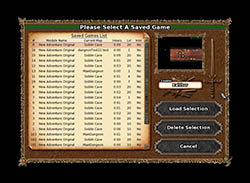
* Website update: I've recently added a chart of the
weapon proficiencies of each class. Click the link and scroll down to see the chart.
* Public domain images: I'll probably use some images from
https://www.publicdomainpictures.net/ as story images, since the site has so many good pictures. See below:



* New module planned: I've been conducting talks with Tiavals concerning a Middle East-themed module or campaign that he is planning to create, in partnership, using the tools of KotC 2.
* Combat scripts: I have implemented a small number of script commands used to control enemies during combat.
The most important one is 'Tactics cast spell', the command used to cast a spell or manifest a psionic power. If a combat script contains several 'Tactics cast spell' commands, then the AI will try to cast each spell in the script sequentially, for example it will cast Haste in the first round of combat and Fireball in the second round. As well as the name of the spell, a few more things can be specified, such as a metamagic option, a target square or a target allied creature. You can also specify 'Breath Weapon' instead of a spell name, if you want the creature to use its breath weapon on a particular round. You also use this command to let a creature drink a potion or use a magic item.
Next, we have 'Tactics always cast'. This command is used when you want a spellcaster to make sure that someone always benefits from a particular effect. For example, a
Cleric might want to cast Death Ward on an allied dragon any time the dragon loses the Death Ward effect. The same thing can be done with Stoneskin, Haste, etc.
Next, we have 'Tactics do not move'. This command is used when enemies should not move for a number of rounds because someone in the group is planning to launch at a particular location an area spell, such as Web, Silence or Darkness.
Next, we have 'Tactics run away'. This command allows the module creator to let a creature run away from combat when between 10% and 90% of its allies have been defeated and/or when a particular creature has been defeated.
Finally, we have 'If combat round number is equal to / above / or below a particular number'. There are two main uses. Firstly, an alarm may be triggered if combat is taking too long. As in KotC 1, this means that all enemies on the map will be ready for the player, so you cannot surprise them. There may also be more enemy groups and enemy patrols. The second use is when you want to have reinforcements join the battle, for example at the beginning of the third round and sixth round of combat. So you check for the combat round number and then you add monsters to the battle.
* What's next: First I need to complete work on voice effects. Then I need to implement equipped musical instruments and Bardic clips. Then I need to implement all the remaining wondrous/magic items that I've been planning to have in the game for a long looong time. I'm also planning to give more feats to a number of classes (as discussed in this
forum thread). I also need to complete work on the spells that can be cast automatically after resting. There is also some work needed on certain script commands that I want to improve. For example, there's a script command to add dialogue answers, but I want that command to allow specifying the text colour and whether the answer can be selected by the player. That way, we can have the game display options that are not available to the party because it requires a certain
Skill. Then there's some extra work needed on combat spellcasting AI. I also want to review all my notes to see if there's something important I forgot about.
Basically, the above is what I'd like to finish before focusing only on the demo adventure. In the demo, I'm planning to use high experience-point awards so that the party gains levels quickly, just like in the demo of KotC 1. It will feature a number of locations, a good number of combat encounters and several interesting riddles and puzzles, such as a piano riddle for which I recently collected piano sounds and created the following image. Traditionally, each piano key is marked with a letter, so you have to find a sequence of letters somewhere and then play the associated melody on a piano to solve the riddle and unlock something.
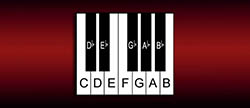
Thank you for reading! Comments are welcome. Farewell and stay tuned for the August update!






























![Have Many Potato [2013] Codex 2013](/forums/smiles/campaign_tags/campaign_potato2013.png)
![The Year of Incline [2014] Codex 2014](/forums/smiles/campaign_tags/campaign_incline2014.png)




![Have Many Potato [2013] Codex 2013](/forums/smiles/campaign_tags/campaign_potato2013.png)
![The Year of Incline [2014] Codex 2014](/forums/smiles/campaign_tags/campaign_incline2014.png)



![Have Many Potato [2013] Codex 2013](/forums/smiles/campaign_tags/campaign_potato2013.png)
![The Year of Incline [2014] Codex 2014](/forums/smiles/campaign_tags/campaign_incline2014.png)



![Have Many Potato [2013] Codex 2013](/forums/smiles/campaign_tags/campaign_potato2013.png)
![The Year of Incline [2014] Codex 2014](/forums/smiles/campaign_tags/campaign_incline2014.png)











